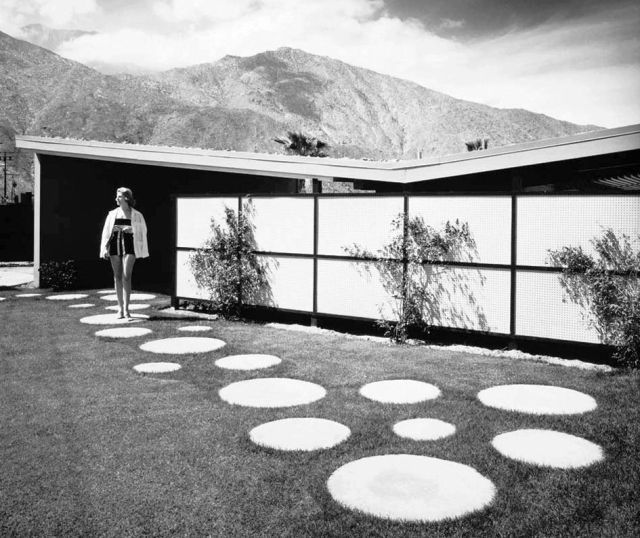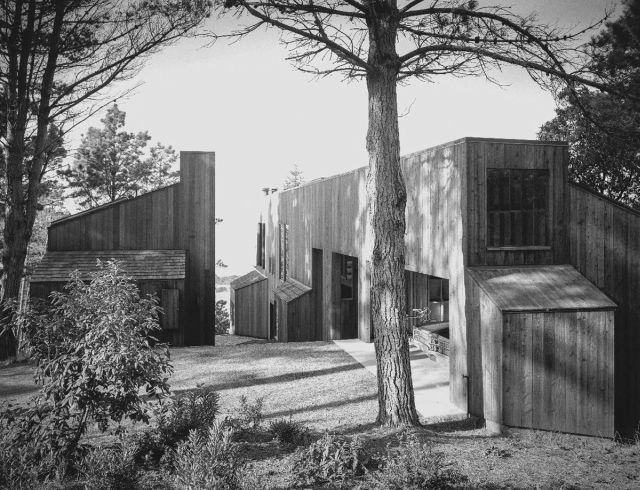
The Photographers Who Defined Modern
 |
In 1936 photographer Julius Shulman walked into a modern home for the first time and was intrigued. For the rest of his long career Shulman would elicit that same sense of intrigue in others. Read about Shulman and seven more ‘Lords of the Lens,’ who did so much to promote modern architecture, in the new fall ‘20 issue of CA-Modern magazine.
The photographers who grew up with modern architecture in California may not be responsible for what homes and other structures look like. But they did bring structures to the attention of the public. They also helped build architectural reputations. And they helped decide which houses would live in history and which would be forgotten.
These men also created works of art that can stand on their own as visual objects while evoking not just architecture, but a world view about modern living.
 |
As auhor Pierluigi Serraino wrote in his 2006 book NorCalMod: Icons of Northern California Modernism:
“A handful of architectural photographers have the remarkable ability to make viewers relate to their photographs at a subliminal level. They are creators of idealized landscapes of modern living that transcend and supersede what they represent.”
As photographer Leland Lee (1918-2016) once said, “Every good house has an aspect about it, and your photo needs to speak about that.” Lee would often spend days at a single house to get just the right images.
Architectural photography as a defined profession grew up with modernism. Through the teens and 1920s, architectural magazines made more use of hand-drawn illustrations than of photos, and until the mid 20th century few photographers specialized in architecture.
Roger Sturtevant (1903-1982), one of the first photographers to build a career around architecture, worked closely with many of the Bay Area’s earliest modern architects, including William Wurster, Gardner Dailey, and landscape architect Thomas Church.
 |
Sturtevant produced many of the images that still define the work of these pioneers in people’s minds today. Homes that most of us have never seen come to life because of these photos.
One of these certainly is an early work by Joe Eichler’s architects Bob Anshen and Steve Allen. Their Silverstone house, with its rustic interior, soaring and complex spaces, odd angles and dramatic skylight, put the team on the map through Maynard Parker's photos, although few people trekked to its relatively remote, rural site in Mexico.
The variety within the work of these great photographers is also notable. Parker (1900-1976) focused almost as much on people and lifestyle as on buildings. He often produced homey scenes showing people reading newspapers, socializing, or simply sprawling in multi-textured, well-appointed, often cozy modern interiors.
“A classic Parker photograph shows people looking through windows outside with children in bare feet playing with their toys,” curator Jennifer A. Watts told a reporter in 2012.
 |
Julius Shulman (1910-2009) too enjoyed placing people in his architectural photos, creating in that way some of the most memorable images in photography. One of these shows a woman posed in front of the pool at Richard Neutra’s Kaufmann house in Palm Springs.
Another is that unforgettable shot of Pierre Koenig’s Case Study House 22, with two women in evening dresses floating in a glass box above Los Angeles.
Ernie Braun (1921- 2010) also included people in his photos when the client allowed. Joe Eichler allowed, because Joe was not seeking to promote pristine architecture. He was trying to attract buyers to his tract homes.
So Braun’s photos illustrate how families enjoy the homes, and how the open spaces inside the home and easy access to outdoor open spaces make it easy for kids to run and play while moms keep an eye on them.
Braun’s photos also suggest the types of young, active buyers Eichler was seeking – the sorts who would set up an easel and paint pictures in the atrium, garden in the backyard, entertain friends and co-workers at cocktail parties and barbecues, and watch on as the little one climbs a backyard tree.
Yet architectural photography can also take on an almost abstract quality. Consider a night image created by Morley Baer (1916-1995) of architect Craig Ellwood's Daphne House in Hillsborough. In the image the house is a horizontal box glowing from within, dark lawn below it, silhouettes of trees and sundown sky above. The image is moody, placid, welcoming.
For more about the days when photographers collaborated with architects to define the meaning of modernism in the public mind, read ‘Lords of the Lens,’ a sneak preview of the new fall ‘20 issue of CA-Modern magazine.
- ‹ previous
- 574 of 677
- next ›



